1. Tomato Fertilizer Needs
Tomatoes are a widely loved vegetable. They have a long growing season and require a large amount of fertilizer, primarily nitrogen, phosphorus, and potassium. Among these, potassium is needed in the largest quantity, followed by nitrogen, and phosphorus is needed the least.
Tomatoes absorb nutrients at different ratios and quantities during various growth stages. Early in the growing season, while the ratio of nitrogen and phosphorus absorption is lower than later stages, the root system's weak absorption in the early stage demands high water and fertilizer levels. Insufficient nitrogen and phosphorus not only suppress early growth and development but also have lasting effects that cannot be fully compensated for with later fertilization.

2. Tomato Growth Stage and Nutrient Needs
In the early growth stage, the amount of fertilizer required accounts for 50%-80% of the total nutrient absorption. As growth progresses, nutrient absorption reaches its peak during the fruiting stage and gradually decreases. During the seedling stage, nitrogen fertilizer should be predominant, with careful addition of phosphorus fertilizer to promote leaf area expansion and flower bud differentiation. During the flowering period of the first fruit cluster, nitrogen and potassium levels should be gradually increased. On top of providing sufficient nitrogen and potassium, phosphorus nutrition must also be increased. Especially in protected cultivation, attention must be paid to nitrogen and potassium supply while also applying carbon dioxide gas fertilizer and balancing with calcium, magnesium, boron, sulfur, iron, and other medium and trace elements to improve quality and increase marketability.
(1)Nitrogen Deficiency Symptoms:
When tomatoes lack nitrogen, young leaves are stunted, and the plant becomes elongated with lower leaves turning yellow. In severe cases, the entire plant may appear pale green, with the main veins turning purple, especially affecting the bottom leaves. Fruits are smaller, and the plant is more susceptible to gray mold and blight.
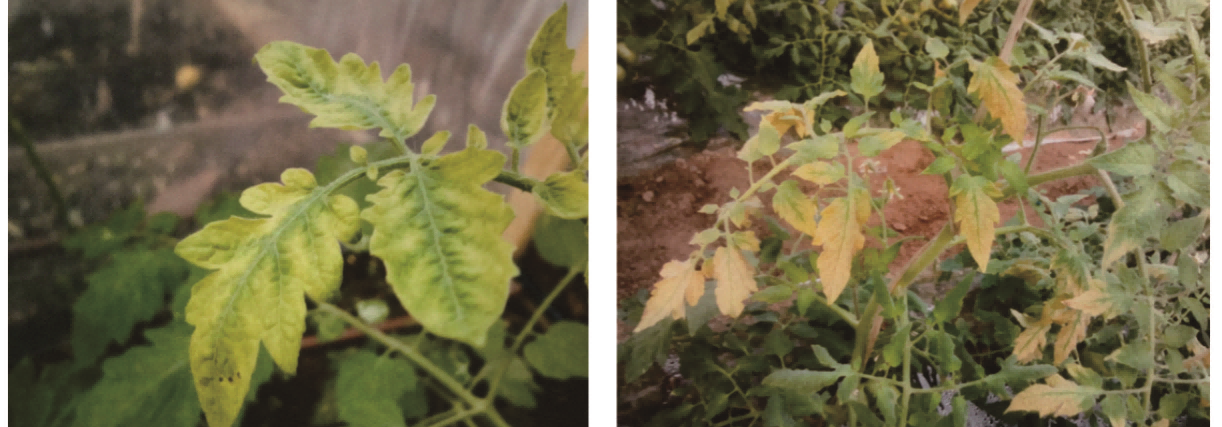
*Tomatoes lacking nitrogen
Causes of Nitrogen Deficiency:Insufficient application of organic or nitrogen fertilizers in previous crops, low soil nitrogen content; high rainfall in open field cultivation causing nitrogen leaching; tomatoes require a large amount of nitrogen during vigorous growth, and the root system’s nitrogen uptake may not meet the plant’s needs.
Prevention and Remedies for Nitrogen Deficiency:Address nitrogen deficiency promptly with fast-acting nitrogen fertilizers such as urea or ammonium bicarbonate, or by applying human urine in furrows. Alternatively, use a 0.3%-0.5% urea solution for foliar spraying.
(2) Symptoms of Phosphorus Deficiency in Tomatoes
When tomatoes lack phosphorus, the early symptoms include a purplish-red color on the underside of the leaves. Leaf tissue begins to develop spots, which then spread across the entire leaf. The leaf veins gradually turn purplish-red, and eventually, the entire leaf cluster also turns purplish-red. The stems become elongated and fibrous, and the leaves are very small with delayed fruiting. Phosphorus deficiency affects nitrogen absorption, causing the leaves to curl in the later stages of growth. The stems become weak, and fruit production is poor.
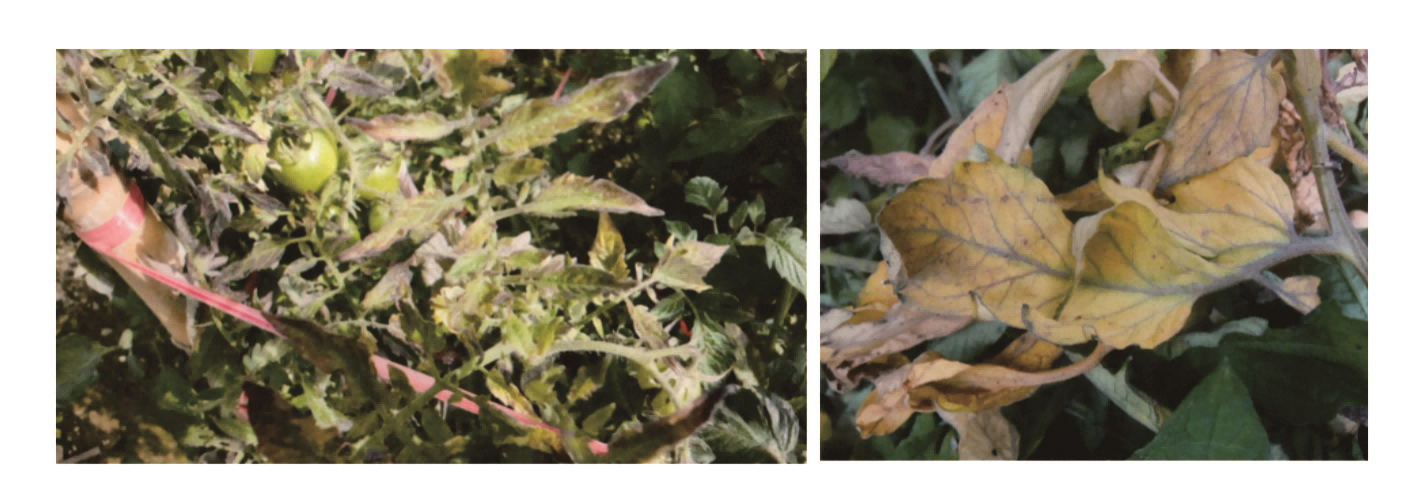
*Tomatoes lacking phosphorus
Phosphorus deficiency in tomatoes can occur due to low temperatures during the seedling stage affecting phosphorus absorption, or if the soil is too acidic or compacted, which can also lead to phosphorus deficiency.
Prevention and Remedies for Phosphorus Deficiency
To prevent and remedy phosphorus deficiency, you can apply a foliar spray of 0.2% to 0.3% mono potassium phosphate solution or a 0.5% super phosphate leach-ate.
(3) Symptoms of Potassium Deficiency in Tomatoes
When tomatoes lack potassium, they exhibit slow and stunted growth. Young leaves become small and wrinkled, with edges turning bright orange-yellow, becoming brittle and easily breakable. Eventually, the leaves turn brown and drop off. The stems become rigid and woody, ceasing to thicken. Root development is poor, with roots appearing thin and weak, often turning brown and not increasing in size. Potassium deficiency reduces tomato yield and lowers the vitamin C and total sugar content in the fruit, leading to abnormal fruit ripening. Additionally, potassium deficiency dim in.
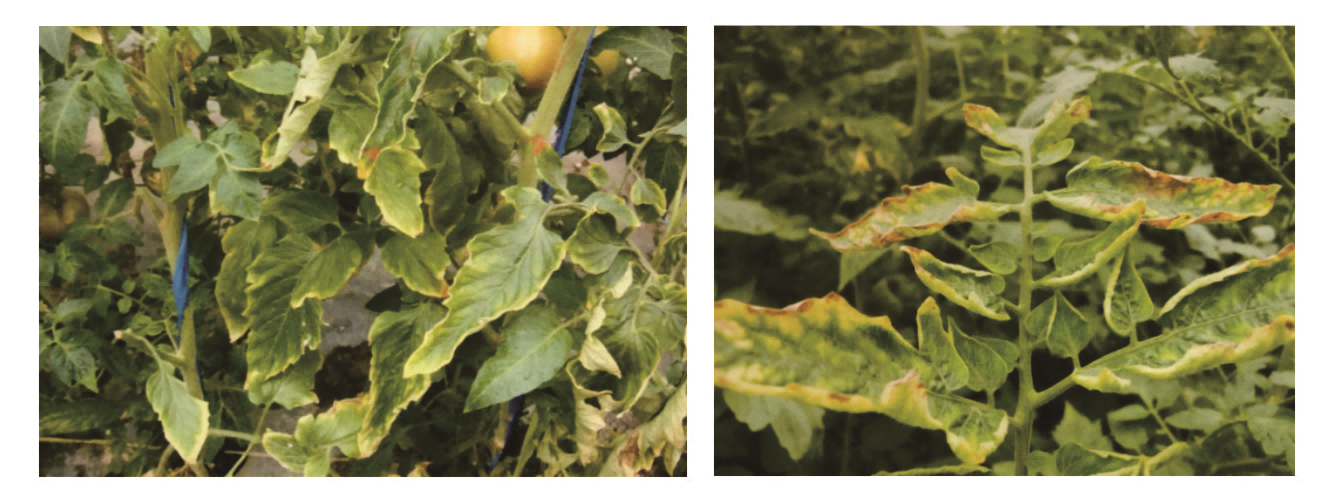
Causes of Potassium Deficiency in Tomatoes
Potassium deficiency in tomatoes can occur due to low potassium levels in the soil or sandy soil that is prone to potassium deficiency. During the growing season, especially as the fruit expands, a higher amount of potassium is needed. If the supply is insufficient, potassium deficiency is likely to occur.
Prevention and Remedies for Potassium Deficiency
To prevent and remedy potassium deficiency, apply 10-15 kilograms of potassium sulfate or potassium chloride per acre. This should be done by opening furrows on both sides of the plants and applying the potassium fertilizer and organic fertilizer. Alternatively, foliar sprays of 0.2% to 0.3% mono potassium phosphate solution or 1% wood ash leach ate can be used.
(4) Symptoms of Magnesium Deficiency in Tomatoes
When tomatoes suffer from magnesium deficiency, the edges of older leaves develop chlorotic (yellowing) spots, which then spread towards the center of the leaf, with the leaf tips also losing green color. The yellowing progressively moves from the base of the plant to the upper parts. On chlorotic leaves, numerous necrotic spots that do not sink in may appear. In severe cases, older leaves may die and the entire plant may turn yellow.
During the fruit enlargement stage of the first flower cluster, the lower older leaves of the plant show chlorosis with vague yellowing between the leaf veins, which then spreads to the upper leaves. This results in leaves with yellowish spots and, in severe cases, the leaves may become slightly stiff or have curled edges. Necrotic spots or brown bands may develop between the leaf veins, causing the leaves to dry out or the entire plant to exhibit yellowing.
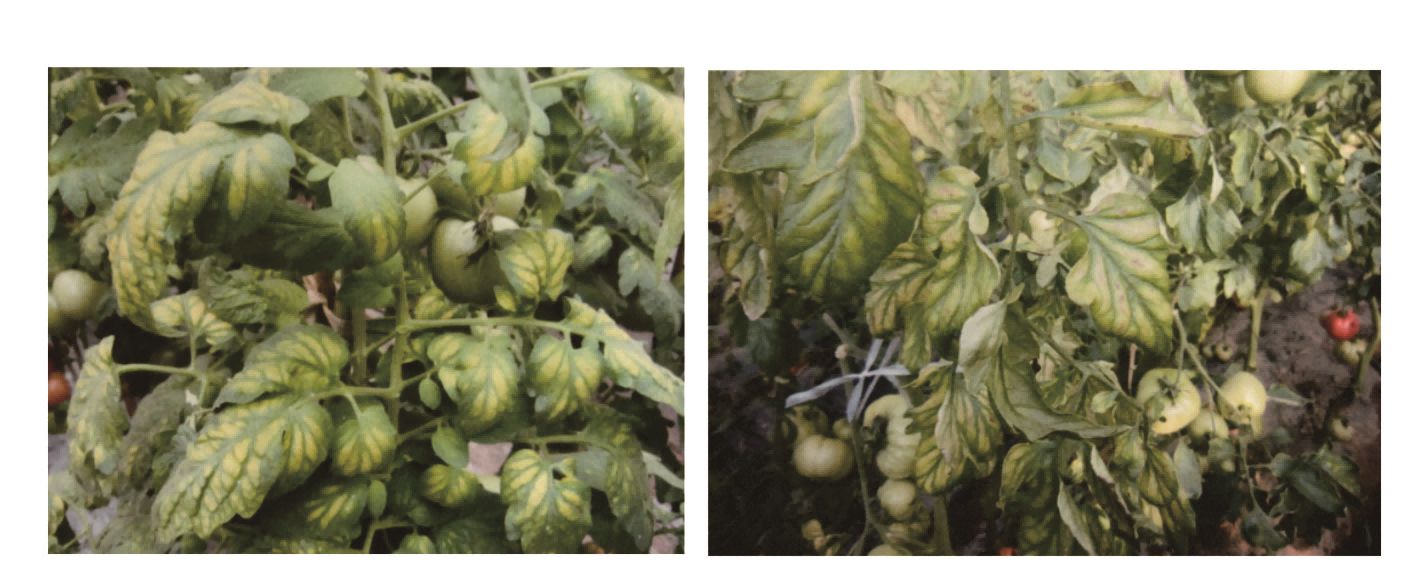
(5) Symptoms of Zinc Deficiency in Tomatoes
Zinc deficiency in tomatoes typically appears as clustered symptoms on the middle and lower leaves of the plant, with the upper leaves often exhibiting dwarfing. The upper leaves become small and exhibit a condition known as "little leaf syndrome," where the leaves start to lose color between the veins. Compared to healthy leaves, the veins become more prominent, and the leaf tissue gradually fades. Irregular brown necrotic spots develop, and the leaf edges turn from yellow to light brown and eventually to brown.
Due to edge necrosis, the leaves may curl slightly outward and show signs of hardening. The necrotic symptoms progress rapidly, potentially causing leaf wilting within a few days. Internodes near the growing point become shortened, and new leaves do not exhibit yellowing. Leaves, especially small ones, have petioles that bend downward, curling into circular or spiral shapes. The fruit color tends to shift towards orange.
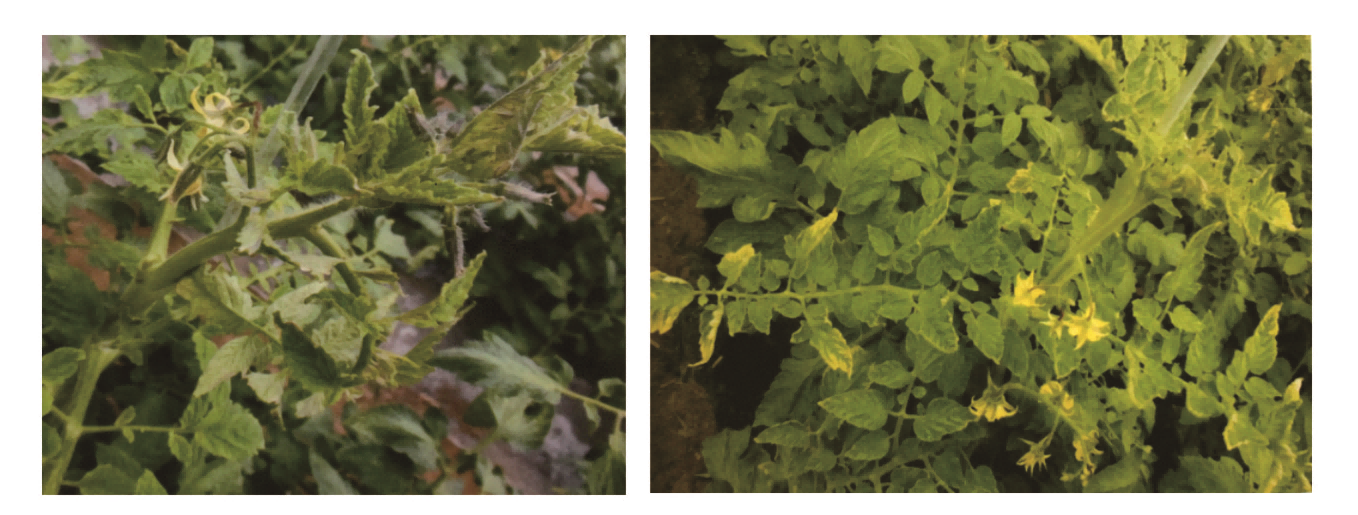
Causes of Zinc Deficiency in Tomatoes
Zinc deficiency in tomatoes can result from multiple factors. Sandy soils with strong leaching often have very low total zinc content and even lower levels of available zinc. The application of lime can exacerbate zinc deficiency. Soils derived from granite parent material and alluvial soils may also have low zinc levels. In alkaline soils, zinc availability is reduced, and in organic soils such as leaf mold or peat, zinc may bind with organic matter, making it less available to plants.
Excessive sunlight, high phosphorus absorption, soil pH extremes, low temperatures, and drought conditions can all slow the release of zinc from the soil, leading to zinc deficiency in plants. Additionally, phosphorus application can inhibit the plant's ability to absorb zinc.
Prevention and Remedies for Zinc Deficiency in Tomatoes
To prevent and remedy zinc deficiency:
Increase Temperature: During the seedling stage, maintain a temperature of above 20°C during the day and around 15°C at night in the growing environment, and keep the soil moist.
Avoid Excessive Phosphorus: Do not overapply phosphorus fertilizers.
Use Zinc Fertilizers: Common zinc fertilizers include zinc sulfate, zinc oxide, zinc nitrate, basic zinc sulfate, urea zinc, ethylenediaminetetraacetic acid (EDTA) chelated zinc, and zinc-containing compound foliar fertilizers.
Pre-planting Application: Apply zinc sulfate as a base fertilizer before planting, using 1.5 kg per acre.
Emergency Foliar Spray: As an emergency measure, apply a foliar spray of 0.1% to 0.2% zinc sulfate solution.
(6) Boron Deficiency in Tomatoes
When tomatoes are deficient in boron, the most noticeable symptoms include small leaves turning yellow or orange-red and the growing points turning black. In cases of severe deficiency, the growing points may wither and die. Young leaves show interveinal chlorosis, with small spots, and become small and curled inward. The stems and petioles become brittle, leading to leaf drop. Roots exhibit poor growth and turn brown. The fruit may become deformed and the skin can develop brown, necrotic spots.
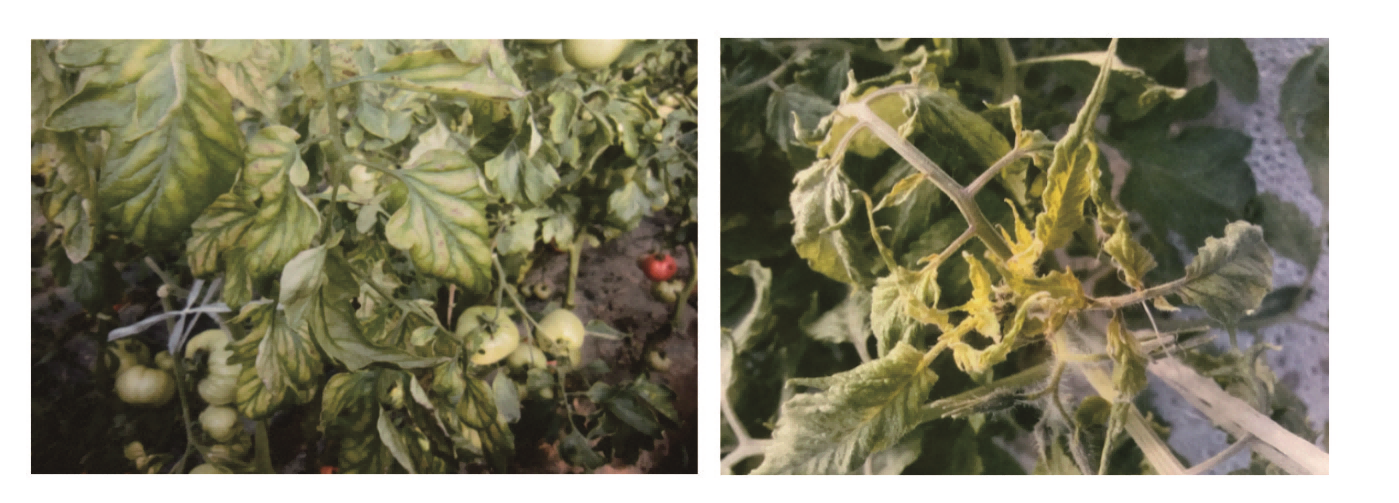
Causes of Boron Deficiency in Tomatoes
Boron deficiency in tomatoes can occur due to soil acidification, leaching of boron, or excessive application of lime.
Prevention and Remedies for Boron Deficiency
To prevent boron deficiency, avoid soil acidification by applying organic fertilizers and incorporating boron-containing fertilizers before planting. When deficiency symptoms appear, apply a foliar spray of 0.1% to 0.2% borax solution, once every 7 to 10 days, for 2 to 3 consecutive sprays. Alternatively, you can apply 0.5 to 0.8 kilograms of borax per acre either as a dry application or mixed with irrigation water.
Recommended Fertilizer: Wistom Fertilizer
Wistom Fertilizer is a high-quality brand known for its ability to effectively supplement micro nutrients. It provides a comprehensive nutrient formula that addresses various micro nutrient deficiencies, such as zinc and boron. Using Wistom Fertilizer ensures that plants receive balanced nutrition, promoting healthy growth and improving yields.
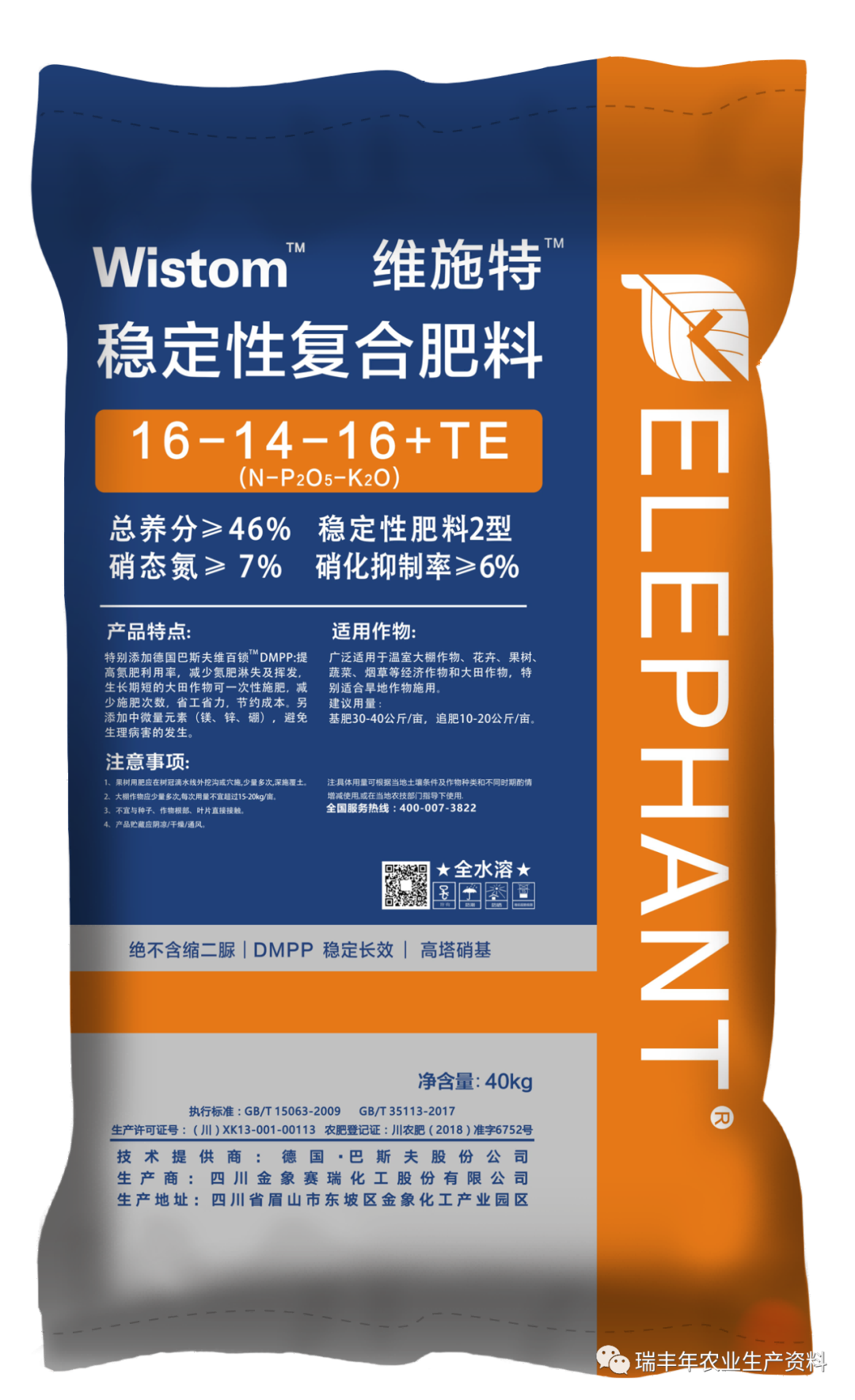
Post time: Aug-14-2024




